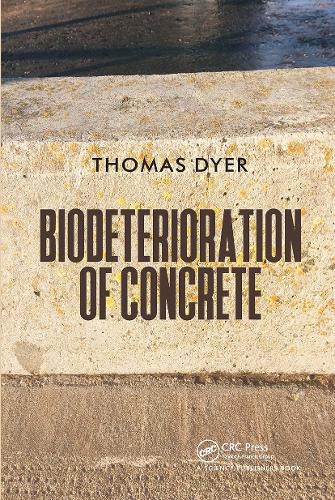Readings Newsletter
Become a Readings Member to make your shopping experience even easier.
Sign in or sign up for free!
You’re not far away from qualifying for FREE standard shipping within Australia
You’ve qualified for FREE standard shipping within Australia
The cart is loading…






Awareness of the importance of ensuring durability of concrete has been a growing concern of engineers, and there is now considerable understanding of the mechanisms, which cause its deterioration, and means of limiting such damage through the use of appropriate materials and approaches to design.
Many of the deterioration mechanisms, which affect concrete, are the result of interaction with the non-living environment - chlorides in seawater, carbon dioxide in the atmosphere, cyclic freezing and thawing. However, living organisms can also cause damage - through both chemical and physical processes - which under the right conditions, can be severe.
This book looks at all forms of concrete biodeterioration together for the first time. It examines, from a fundamental starting point, biodeterioration mechanisms, as well as the conditions which allow living organisms (bacteria, fungi, plants and a range of marine organisms) to colonise concrete. A detailed evaluation of chemical compounds produced by living organisms with respect to their interaction with the mineral constituents of concrete, and the implications it has for the integrity of structures, is also included. Approaches to avoiding biodeterioration of concrete are also covered, including selection of materials, mix proportioning, design, and use of protective systems.
$9.00 standard shipping within Australia
FREE standard shipping within Australia for orders over $100.00
Express & International shipping calculated at checkout
Awareness of the importance of ensuring durability of concrete has been a growing concern of engineers, and there is now considerable understanding of the mechanisms, which cause its deterioration, and means of limiting such damage through the use of appropriate materials and approaches to design.
Many of the deterioration mechanisms, which affect concrete, are the result of interaction with the non-living environment - chlorides in seawater, carbon dioxide in the atmosphere, cyclic freezing and thawing. However, living organisms can also cause damage - through both chemical and physical processes - which under the right conditions, can be severe.
This book looks at all forms of concrete biodeterioration together for the first time. It examines, from a fundamental starting point, biodeterioration mechanisms, as well as the conditions which allow living organisms (bacteria, fungi, plants and a range of marine organisms) to colonise concrete. A detailed evaluation of chemical compounds produced by living organisms with respect to their interaction with the mineral constituents of concrete, and the implications it has for the integrity of structures, is also included. Approaches to avoiding biodeterioration of concrete are also covered, including selection of materials, mix proportioning, design, and use of protective systems.